If you’re like me, tomatoes are one of your most prized crops in the garden. Trellising tomatoes can help increase your yield and help ward off common tomato diseases such as early blight and blossom end rot. Learn how to trellis your tomatoes the right way here.
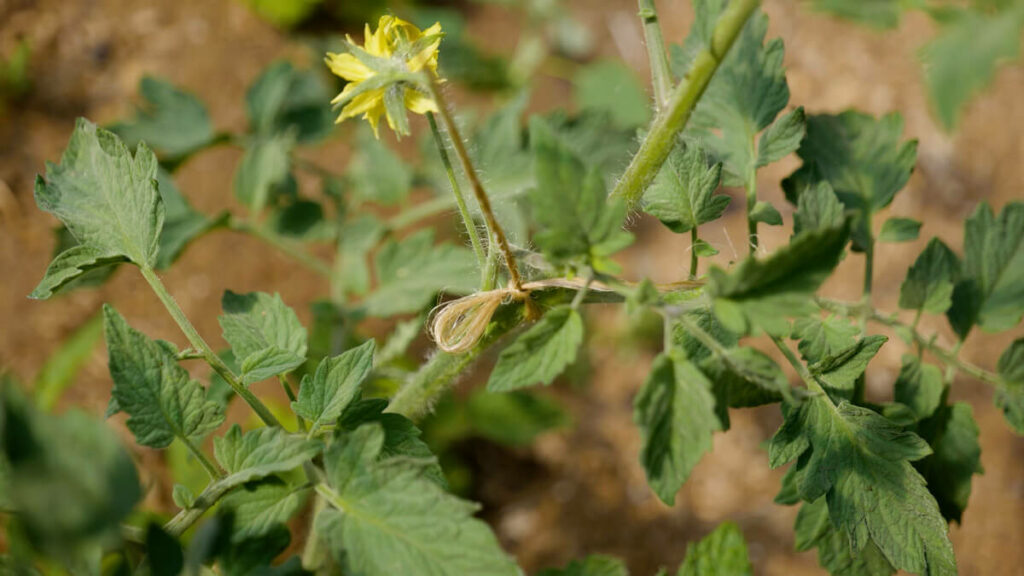
I love growing tomatoes, especially on a tomato trellis, because I’ve seen firsthand the difference it makes in the health and growth of the plant. Here are some more posts all about planting and growing tomatoes:
- Raise a Year’s Worth of Tomatoes
- 15 Must-Know Tomato Growing Tips
- How to Prune Tomato Plants for Better Harvest
- Preventing & Treating Early Blight (Tomatoes or Potatoes)
Depending on when you’re reading this, you may also be interested in how to start seeds indoors as well as how to pot up seedlings before they’re ready to transplant into the garden.
Then follow up with my favorite way to make homemade tomato sauce (including canning instructions).
Watch the full video tutorial below!
Why Trellis Tomatoes
Trellising tomatoes is an important garden task for many reasons:
- Indeterminate tomato vines can grow tall and bend over or break with the weight of the fruit. (This doesn’t apply in the same way to determinate varieties like cherry tomatoes, though my trellising method can still help manage their growth.)
- Fruit close to the ground is more susceptible to getting eaten by pests.
- Fungal spores (such as early blight and late blight) are transferred from the soil, so keeping tomatoes off the ground helps prevent common diseases.
- BONUS: Harvesting tomatoes will be easier!
Once you learn the basic techniques of trellising tomatoes, you can use the same methods for other veggies like cucumbers, peppers, melons and more! Growing vertically can save a lot of space in the garden, especially if you’re limited in square foot space because you’re growing in a raised bed or smaller area.
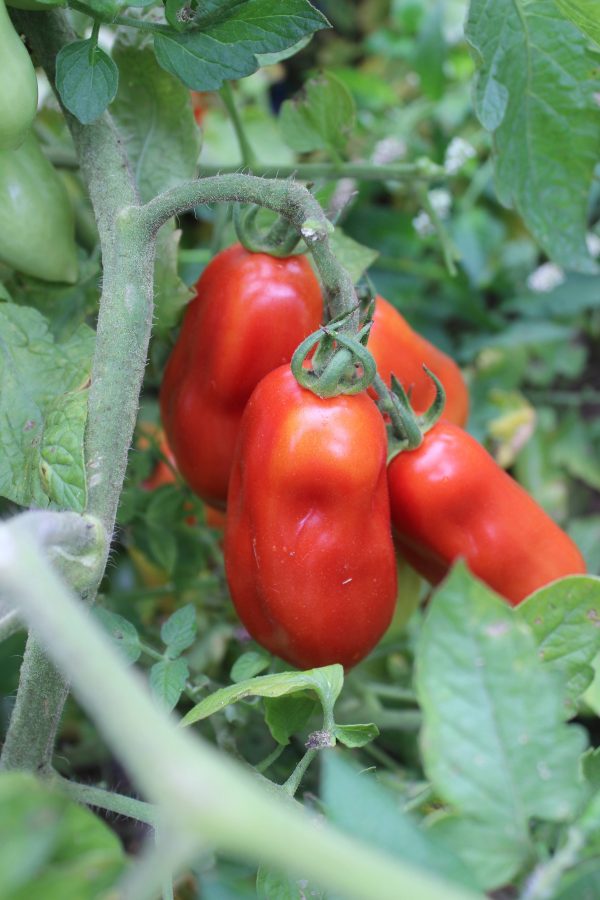
Less Breakage
Indeterminate tomatoes will continue growing in height as long as they have the right conditions. By growing tomatoes up on a trellis, your plants will yield more fruit throughout the summer months.
Trellising tomatoes and training them up is important for tall growth, but also to avoid the branches from breaking under the weight of the setting fruit.
We don’t want to go to all the trouble of starting our heirloom tomato plants indoors, transplanting them into the garden and tending to them while they’re small only to have the branches break and the fruit spoil.
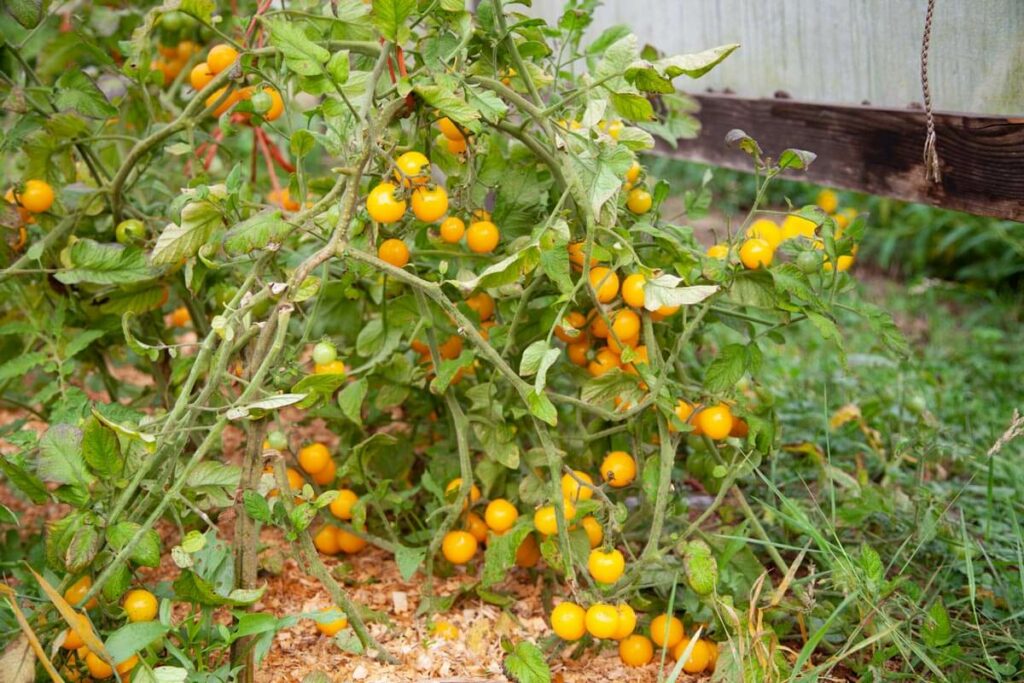
Less Susceptible to Pests
As tomato plants grow, they love to vine, so if we’re not trellising them up and away from the ground, they’ll lie on the ground making your fruit susceptible to pest infestation and damage from slugs and other garden critters.
So if you want to keep your fruit and not feed the garden critters, I recommend trellising tomatoes.
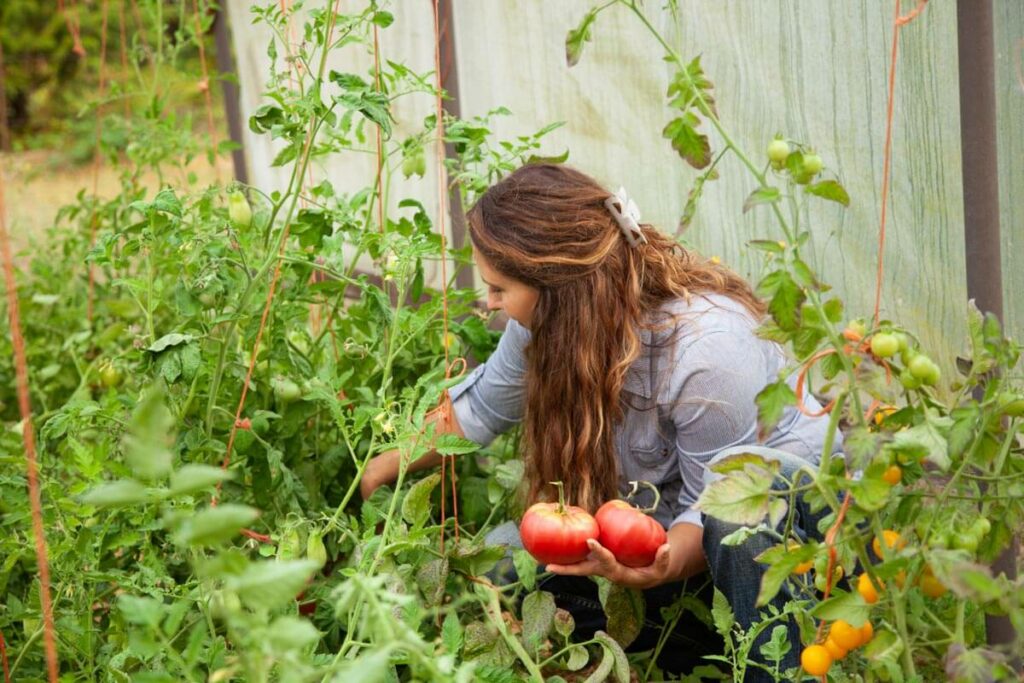
Less Disease
And finally, when trellising tomatoes, they will be less prone to disease. In many climates, especially those with damp or humid summer conditions, pruning tomatoes is important for proper airflow.
However, trellising tomatoes is imperative to avoid fungal diseases such as early blight. Keeping the plants up off the ground will naturally improve airflow as well.
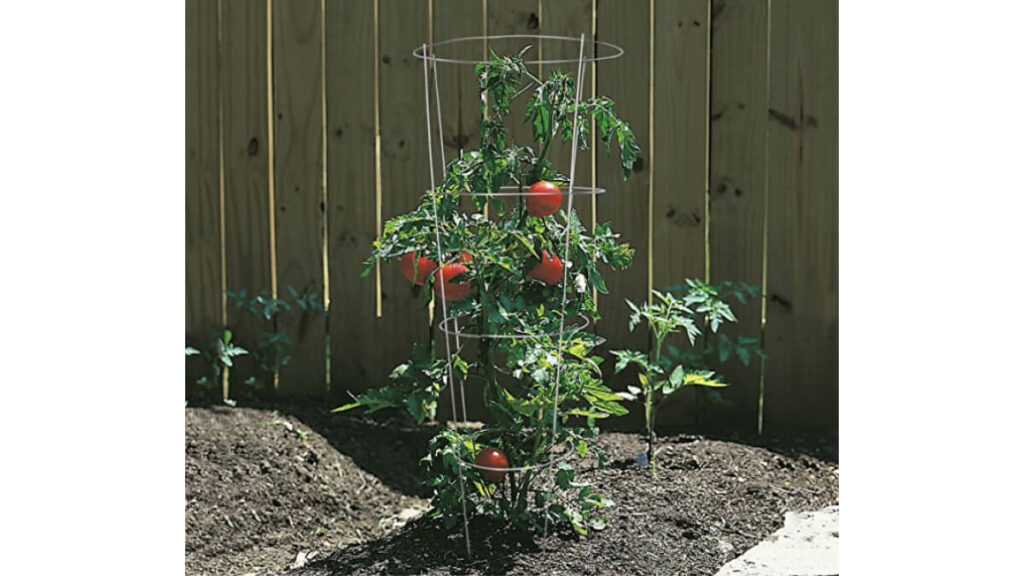
Why Tomato Cages Don’t Work
Smaller tomato cages that you see in the garden centers (pictured above) aren’t ideal for indeterminate tomato varieties. They may work well for the first couple of months or for some smaller determinate tomato plants, but indeterminate tomatoes will grow as tall as I am, and those cages always end up bent and broken under the weight of the plant by the end of the season.
You may think using tomato cages when the plant is small is a good idea, but as those vines grow out, the cage will be near impossible to remove without damaging the plant.
I recommend that you steer clear of those cages and learn how to trellis your tomatoes.
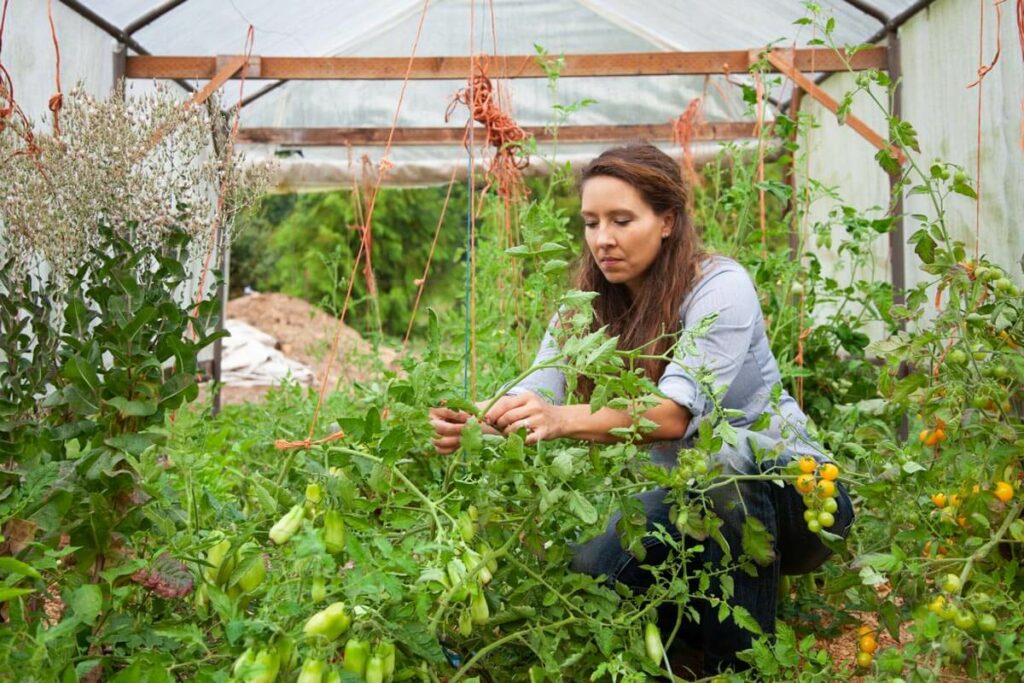
Types of Tomato Trellises
There are multiple ways to trellis tomatoes, and trust me when I say I’ve tried most of them! I wish I had known about the pros and cons before trying each method; it would have saved me a lot of time!
There are certainly multiple great ways to go about your DIY tomato trellis, but some have some downfalls that I’ve noticed:
- Tomato Cage – For indeterminate varieties, these simply aren’t strong enough to hold up to the weight of the full-grown plant. They generally break or bend, and you need to buy them new the next year because last year’s are too mangled to work well.
- Trellising with Cattle Panels – This can be wonderful, especially if you have a couple of people who can help you set them up. But if you’re a solo gardener, these cattle panels with rebar get very heavy and are nearly impossible to set up by yourself.
- Florida Weave (aka Weave Method) – This method works great and is a similar option to my method below. It’s just a slightly different way of stringing tomatoes where you go horizontally instead of vertically.
- String Trellis – This is my preferred method as it allows you to grow tall plants with easy access to the fruit all season long.
- Trellis System w/ Tomato Clips – If you want to invest in tomato clips, these can be handy to use in a similar fashion to my method. However, if you want to save yourself the cost of the clips, my method works great. I’ve found by the end of the season, the clips can be hard to locate and I’ve been known to toss them into the compost right along with my tomato vine.
- Trellising with Wire – I don’t recommend trellising tomatoes with wire. Though it seems like a stronger option than twine, the wire can get quite hot in the sunlight and actually burn or cause damage to the tomato plant.
- Wooden Stakes (or PVC or Rebar) – Another great option! Adding a large wooden stake, PVC pipe or rebar into the garden bed at the same time you’re planting tomatoes allows you to tie the growing plant to the stake as the plant grows. Staking tomatoes is a good option if you don’t want to bother with tying to the wire up high.
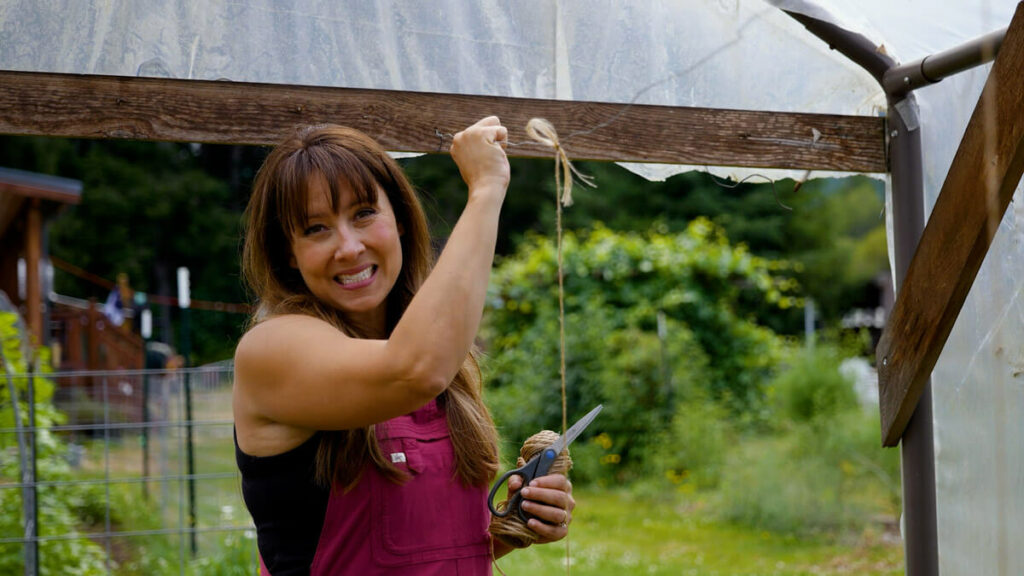
How to Trellis Tomatoes
I will share the two methods of trellising tomatoes we use in our gardens. The first is with a guide wire stretching above our tomatoes, and the second is with a hog panel. Though I said earlier that wires aren’t great, the wire itself isn’t touching the plants, it’s simply used for strength and to give us something to tie our tomatoes to.
Supplies Needed
- Supports – You’ll need some kind of support for trellising your tomatoes. In our high tunnel, we have the wooden support beams that we’ve drilled holes through to run the wire. At the Farmstead, we use hog panels. Another option is to use T-posts or wooden fence posts.
- Wire – Thin metal wire is ideal for running as the support wire. It’s stronger than twine and can be used for multiple years.
- Twine – For trellising tomatoes, you’ll want to use either jute twine, baling twine or any other soft string that won’t cut through the tomato’s stem. Use something that’s compostable, then you can just toss it into the compost along with the tomato vine at the end of the year.
Because we live in the Pacific Northwest, we tend to get a lot of rain in early and late summer. Therefore, we grow most of our tomato crop in our high tunnel. This works well to run a wire from one end to the other through the wooden supports.
If you don’t have a structure to attach the wire to, you can drive T-posts or wooden fence posts into the ground and run the wire along the top of those. We use this method for our raspberries.
Depending on your row length and how many tomato plants you’re trellising, you may need additional support in the center. I’d recommend a height of at least 6-8 feet above the soil level for the posts.
One piece of wire is sufficient to support about three tomato plants. Any more than this, and you’ll need some kind of bracing to help support the weight of the tomatoes.
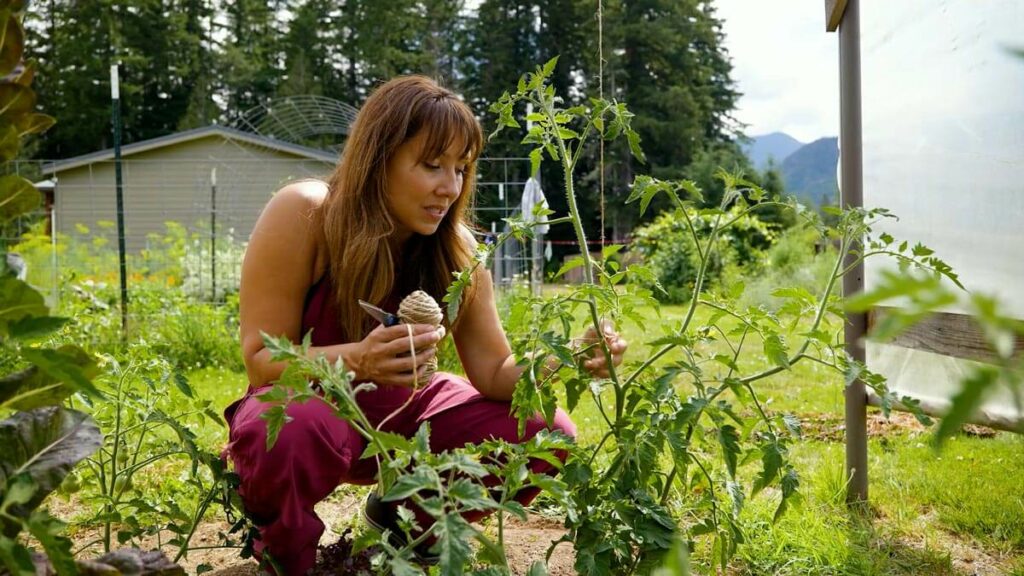

Step-by-Step Directions
- Choose the best option for running your support wire and get that set up before trellising tomatoes.
- Once your support wire is run, find a good spot on your tomato plant on the central stalk (main stem) to tie the initial support twine. I call this the first tying, as it’s likely all you’ll need to do for each plant as they start growing. Find the spot on the main vine and tie the twine, using a slipknot, just below a sturdy branch. Be sure to leave a bit of wiggle room for the vine to grow in diameter. The first time you do this it may seem a bit tricky, but stick with it, you’ll get the hang of it!
- Stretch the twine up to the support wire or hog panel and tie it off.
- As your tomato plants grow and more branches shoot off (suckers), you’ll want to return and do the second tying. This is where you identify branches with flowers and get them tied up before the fruit sets and branches bend or break.
- For the second tying, instead of tying off each piece of twine onto the guide wire or hog panel, I like to take the twine up and over the wire and then tie it off to another branch. This means you’re supporting two branches with half the effort.
- After that, you may only need to return for a third tying if your growing season is long enough or if you notice some of the branches need additional support. I find my larger heirloom varieties tend to need more support than varieties like the San Marzanos.
And that’s it! You now know how to trellis your tomatoes in your home garden to maximize your growing space and your harvest.
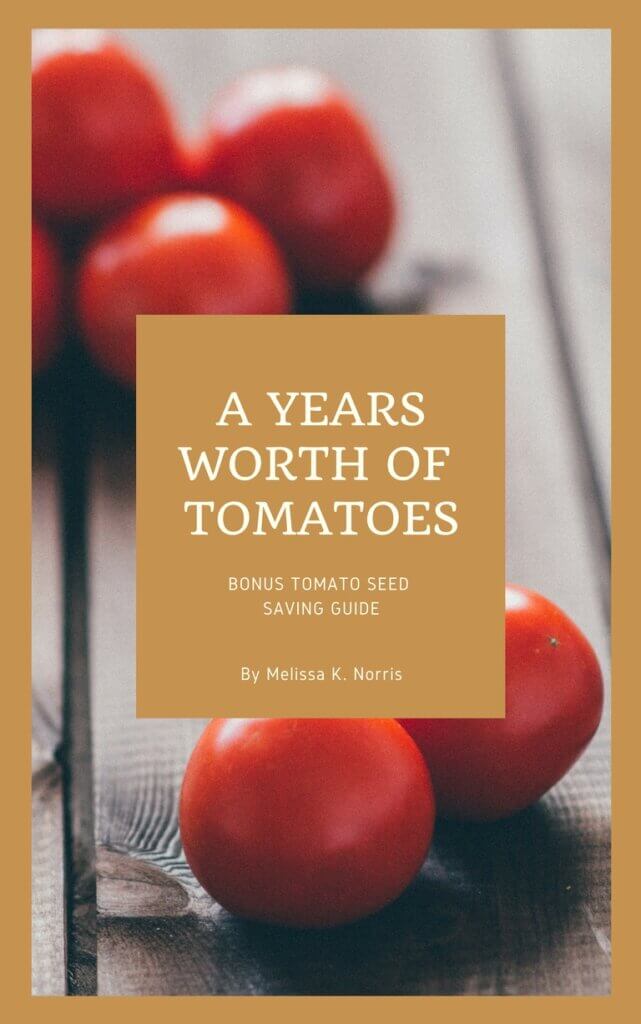
Be sure to grab my free e-guide on growing a year’s worth of tomatoes to learn:
- How to prune tomatoes for a larger harvest,
- The simple steps to do at planting time for a healthier plant,
- How to avoid blight,
- How to get rid of blossom end rot,
- And a bonus tomato seed-saving tutorial.
Then, be sure to check out the posts below for more great gardening content.
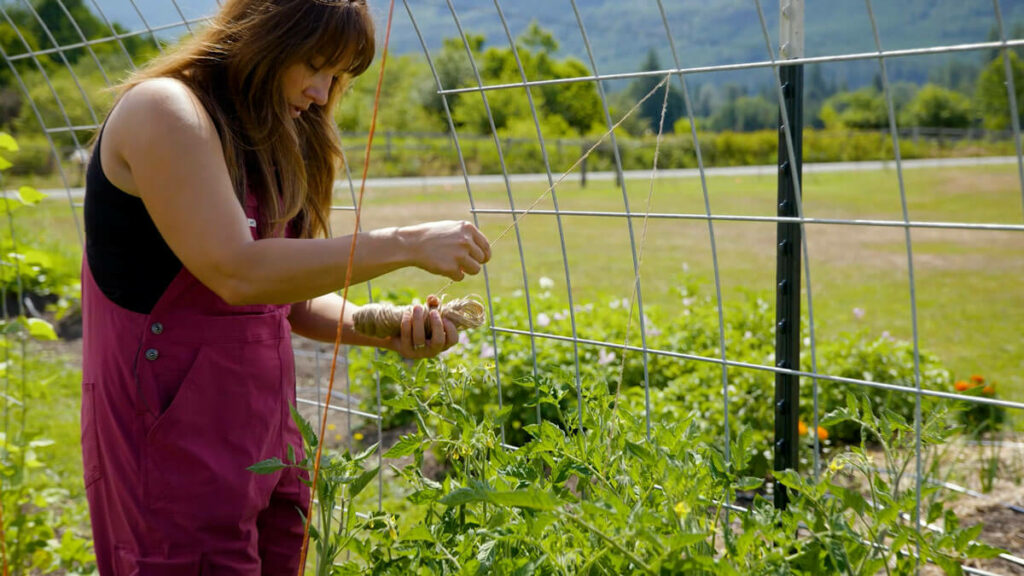
More Posts You May Enjoy
- Storing Green Tomatoes for Fresh Eating
- Weston Tomato Press (+ Tomato Sauce Recipe)
- Tomato Onion Jam Recipe
- Homemade Tomato Soup
- Canned Tomato Sauce Recipe
- Sheet Mulching the Easy Way
- Wood Chips for Garden Mulch – Beneficial or Not?
- Beginner Gardening Secrets You Need to Know
- Science-Based Companion Planting Strategies
- 13 Basic Steps to Starting a Vegetable Garden
- How to Create a Garden Plan for More Harvest & Less Stress
- Planning a Fall Garden (28 Crops to Plant in August)
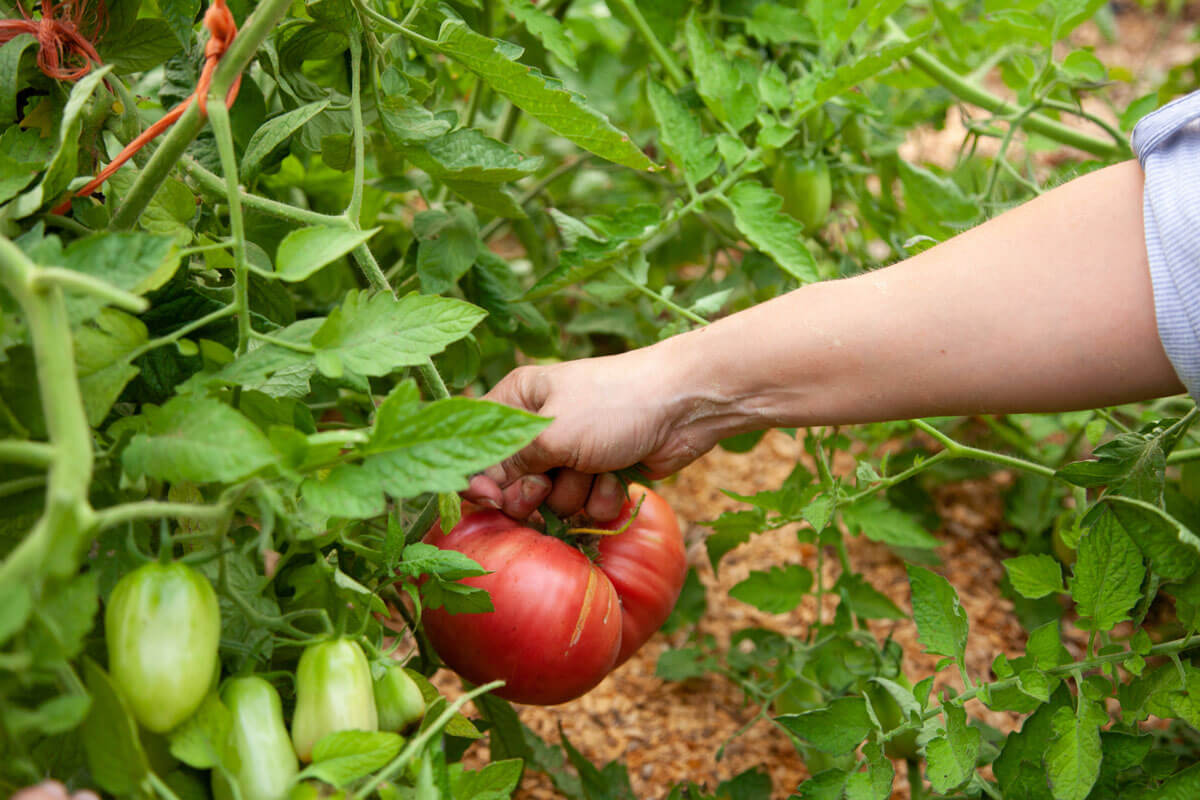
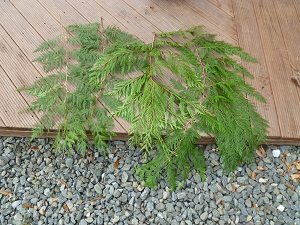
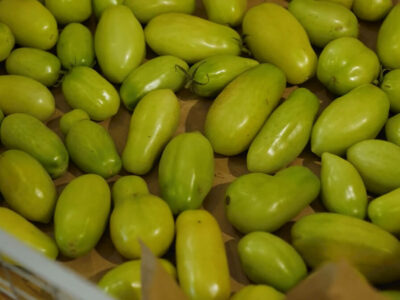
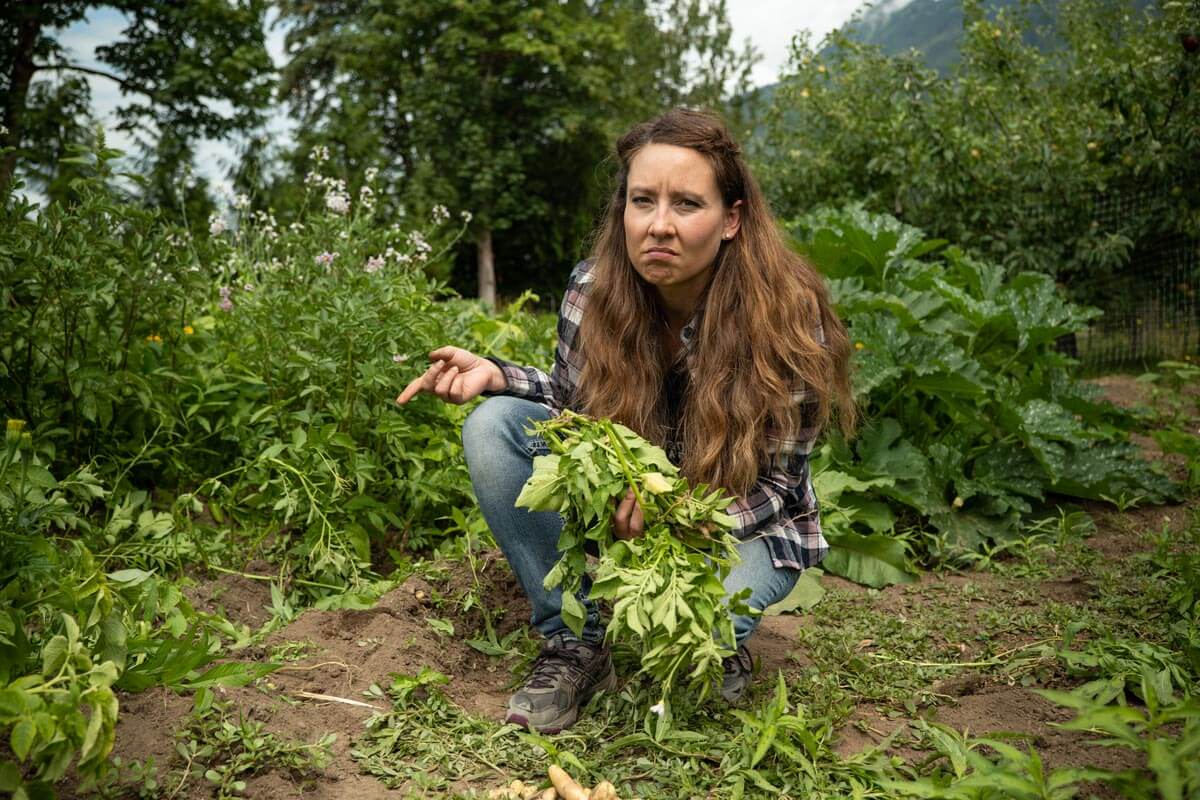
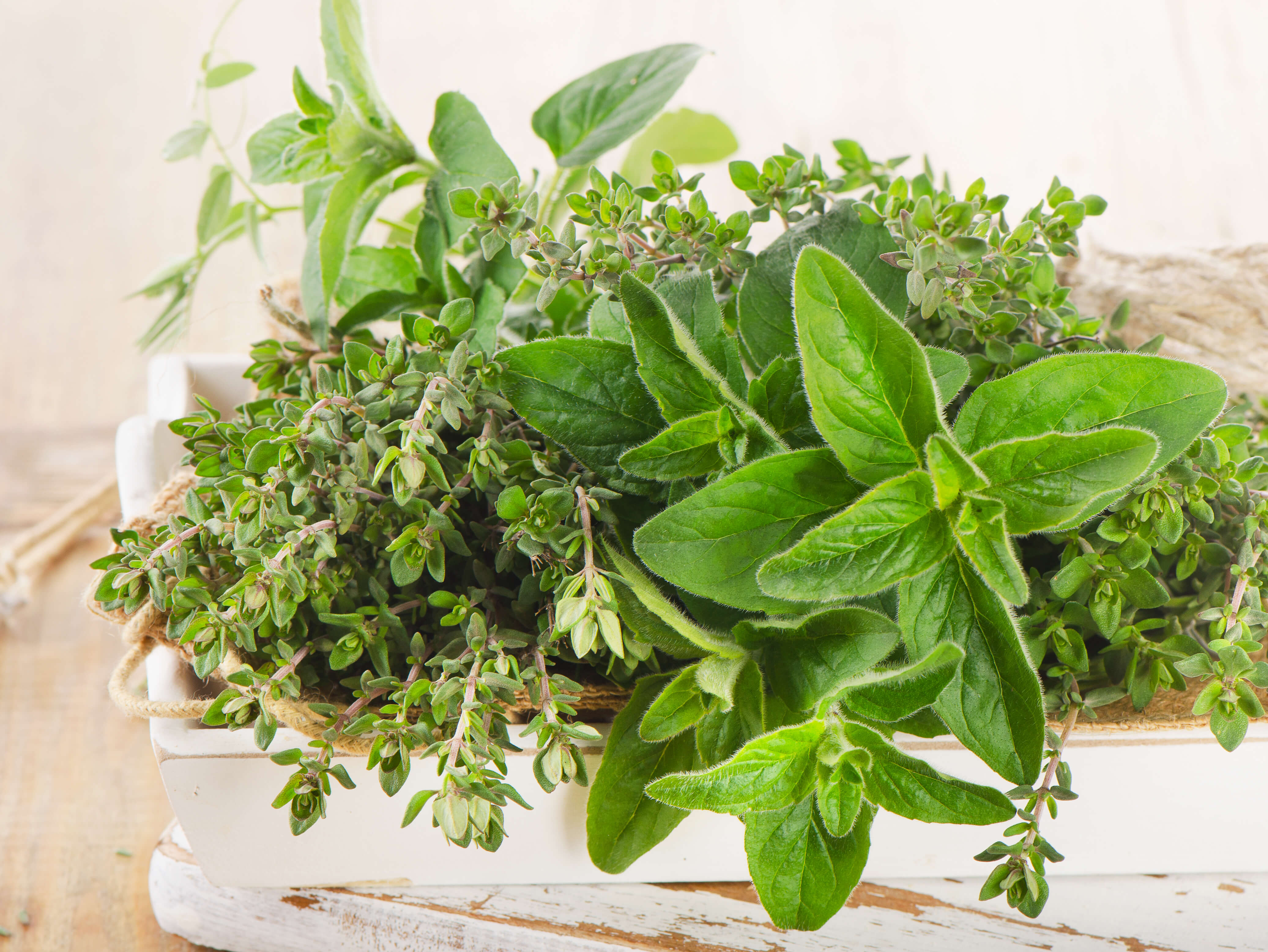
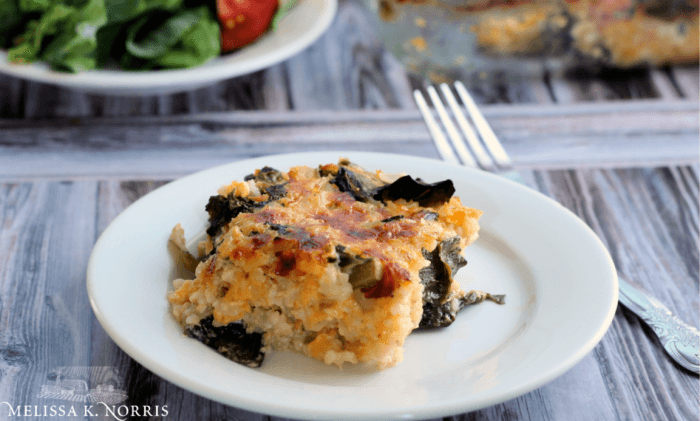
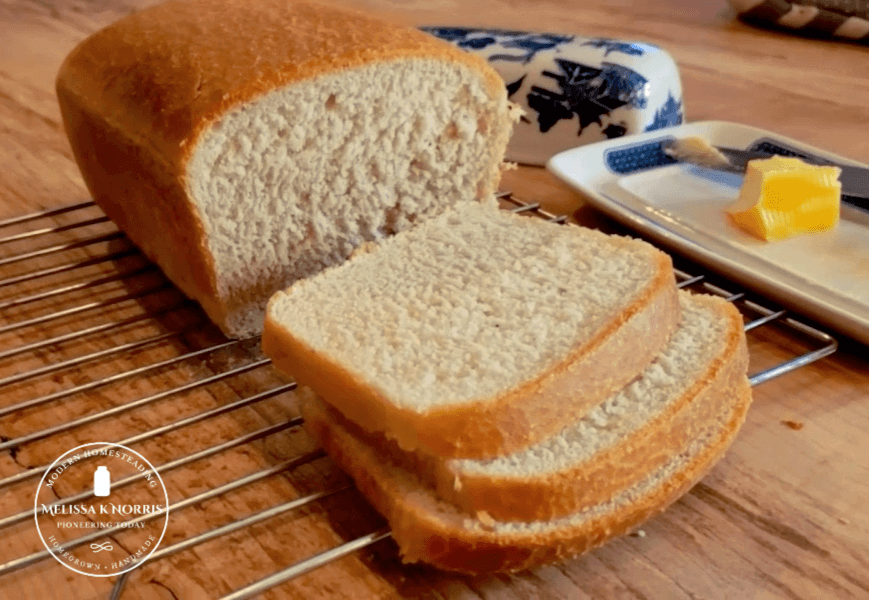

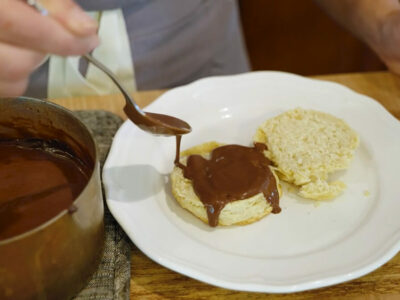


I’m thankful for your hard work in doing these videos and articles..
Blessings,
Maria
That’s why it’s important to know your sites, I filmed an entire video (which is in the article) and wrote the post. Your stats on AI are inaccurate as a whole and AI isn’t used on this website
I find your explanation of trellising tomatoes by dropping a string from an overhead wire to be lacking in pictures to go with your explanation.
Personally the similar method I’ve seen growers use is to bend the tomato plant around the vertical string as it grows.
As to ting them to a hog panel, I would see that as being similar to the idea of espalier.
I agree that cages are not very useful if the plant is an INdeterminate. Even with a cage, though, you have to keep an eye on the branches so as to keep moving them inside the cage and up over the rungs so that the branches aren’t forced downward as the plant grows.
I use a combination of cages and a singular wooden stake that the tomato is tied to. And I add more ties to help the plant keep growing straight up instead of letting it flop over. If I have the plant in a cage as well, I keep an eye on the branches an lift them over the rings when they have grown long enough to stay there.
90% of these articles are now written by AI… 9% are written by content farms. Sad to see the internet corrupted like this, a great tool that is used to make the world worse place, but the internet is just a reflection of us…
I can attest that Melissa does not use AI and puts in much time to write every article herself. I know this as I have read her articles for years. Way before the introduction of AI. its insulting to Melissa’s efforts to say that 90% of her articles are AI generated! And unfounded. Her advice has helped me raise a food producing garden and process it all so well! Thank you Melissa for all your hard work and effort! 99.9% of us truly appreciate it!
There’s an entire step-by-step video in the article, I don’t know how to provide more how to than that.